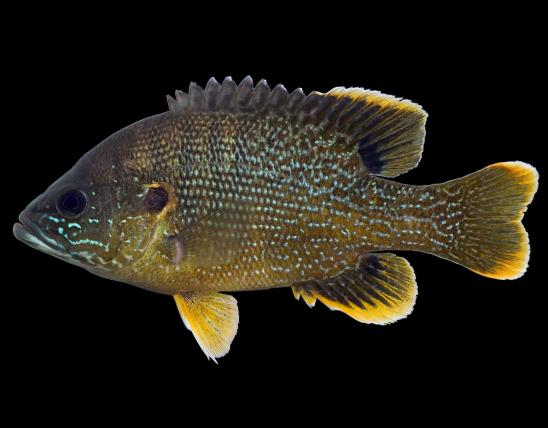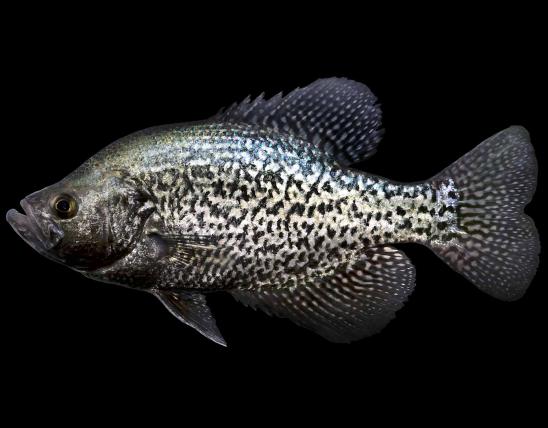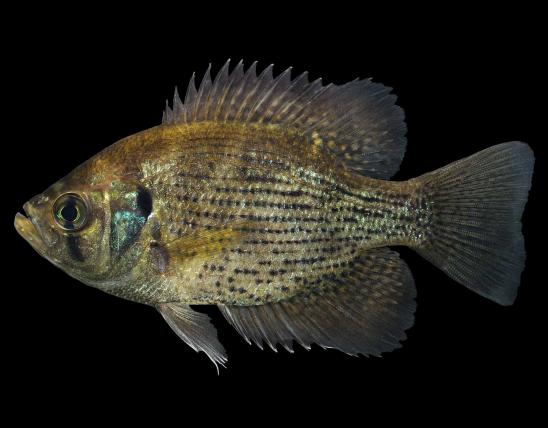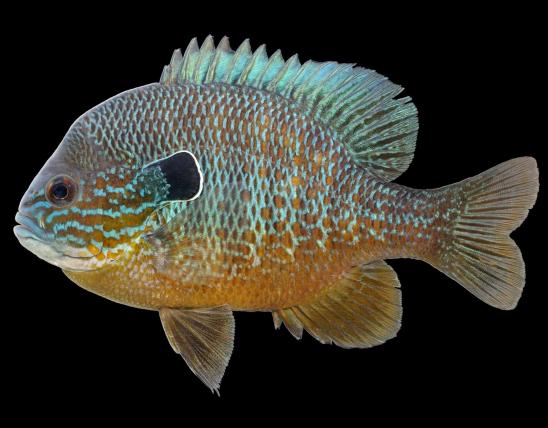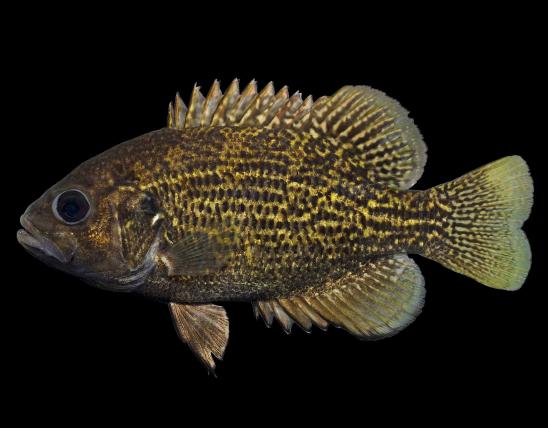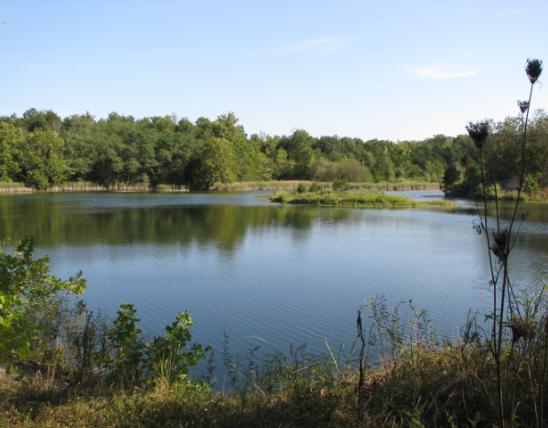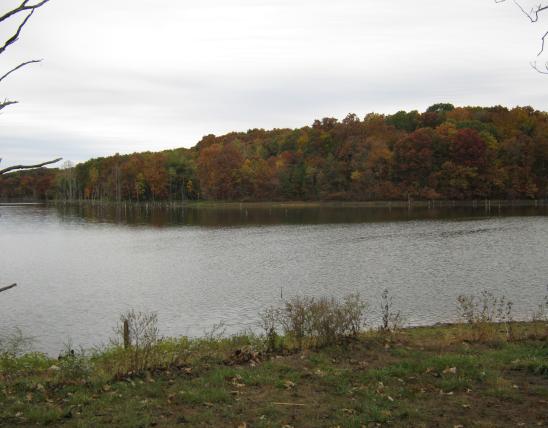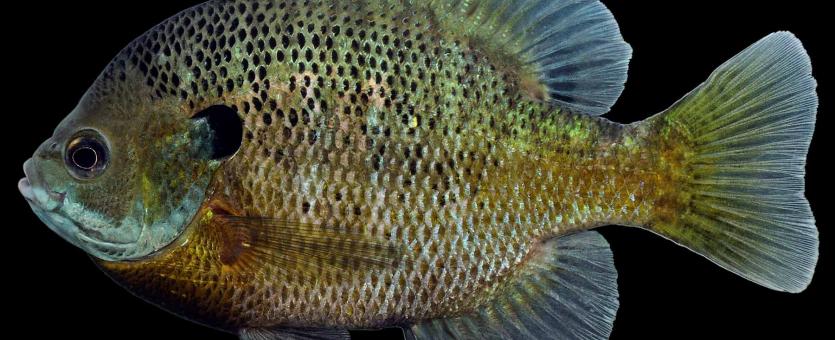
The bluegill is a small-mouthed sunfish with the upper jaw not reaching past the front of the eye. The spinous dorsal has 10 spines, broadly connected to the soft dorsal, which often has a black blotch near the bases of its last rays. The long, pointed pectoral fins reach well past the front of the eye when bent forward across the eye. The black ear flap is moderately prolonged. The back and sides are dark olive-green with an emerald and brassy shine; the breast and belly are yellow or reddish orange. The chin and lower part of the gill cover are blue.
Length: to about 9½ inches; weight: usually to 12 ounces.
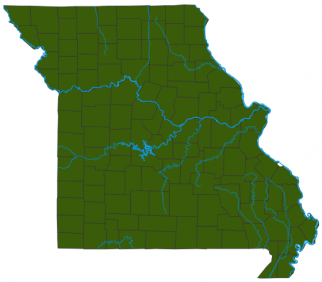
Statewide.
Habitat and Conservation
These prolific breeders occur in many habitats, from farm ponds to large reservoirs and nearly any stream capable of supporting fish. Their natural range has grown as they have been stocked statewide to feed largemouth bass, and many anglers enjoy catching them. They prefer deeper pools and backwaters of low-gradient streams, particularly in overflow pools along river floodplains. They do not tolerate high turbidity and thrive best in warm, clear waters with aquatic plants or other cover.
Food
Bluegill feed primarily by sight, at all levels of the water, homing in on moving objects. When mayflies are emerging, they feed at the surface. The small mouth limits what can be eaten. Fry eat mainly small crustaceans; adults eat mostly insects, plus small fish, crayfish, and snails.
Status
Stocked in large numbers throughout the state. In ponds where predation is lowered by bass overharvest, bluegill can overcrowd and become stunted.
Life Cycle
These gregarious fish often swim in loose groups of 20 to 30; at midday they move to deeper water or shady spots. In mornings and evenings, they feed in the shallows. Nesting, which starts in late May and continues into August, is in water 1 to 2 feet deep, and the preferred substrate is gravel. Males fan out shallow nests, and after spawning, they guard the nests until the eggs hatch. Once hatched, the fry are on their own. By age 3 or 4, they are usually about 6 inches long in our state.
Bluegill have an interesting breeding behavior: Certain non-nesting males, called “sneakers” or “satellites,” have the color pattern and behavior of females; they enter other males’ nest areas and fertilize eggs without alerting the territorial-nest-holding male.
Human Connections
For anglers, the bluegill provides considerable sport when taken on light tackle, and the flesh is firm, flaky, and well flavored. Bluegill are almost universally stocked in artificial ponds as forage for largemouth bass.
Ecosystem Connections
Bluegill are important aquatic predators in the streams and ponds they occupy. In turn, they provide food for larger fish. The eggs and defenseless fry are eaten by numerous predators.
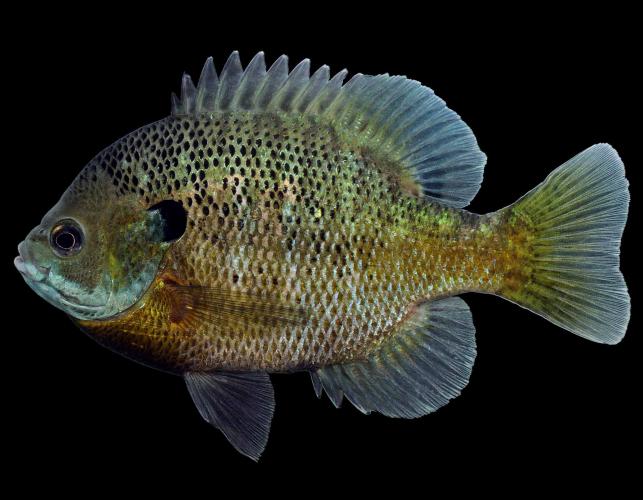
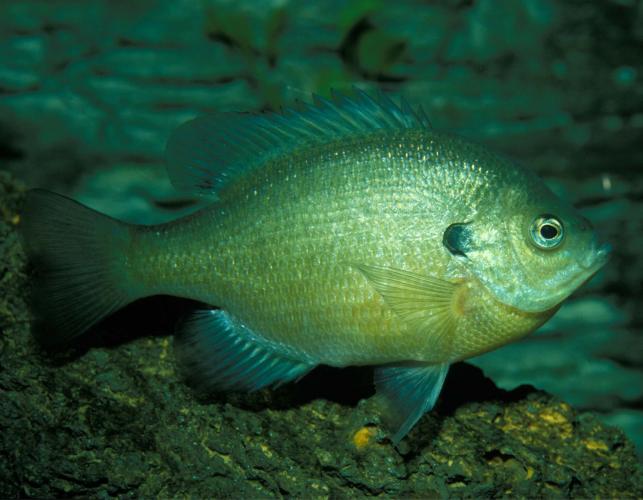
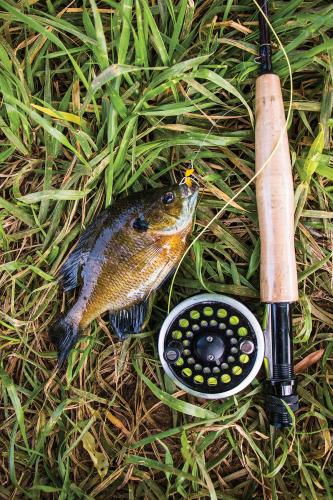
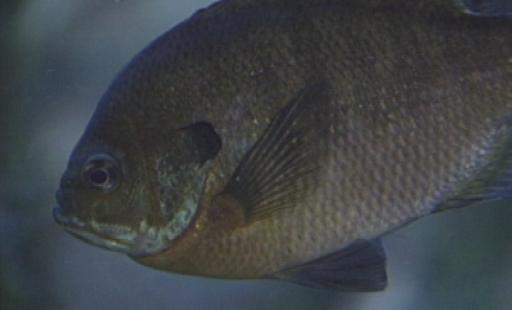
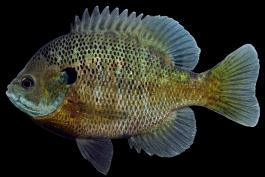
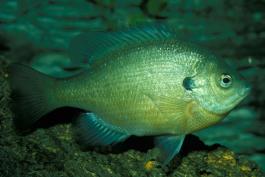
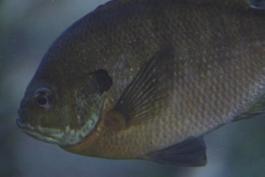
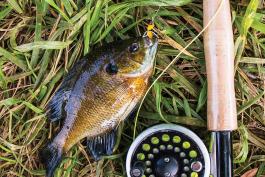

Where to See Species
The 2,158-acre area is about 60 percent forested. The remaining 40 percent consists of grasslands, row crops, and idle fields.
- This area owned and maintained by Sedalia Parks & Rec Department, Sedalia, MO. For more information please contact Sedalia Parks & Rec - 660-826-4930.






















